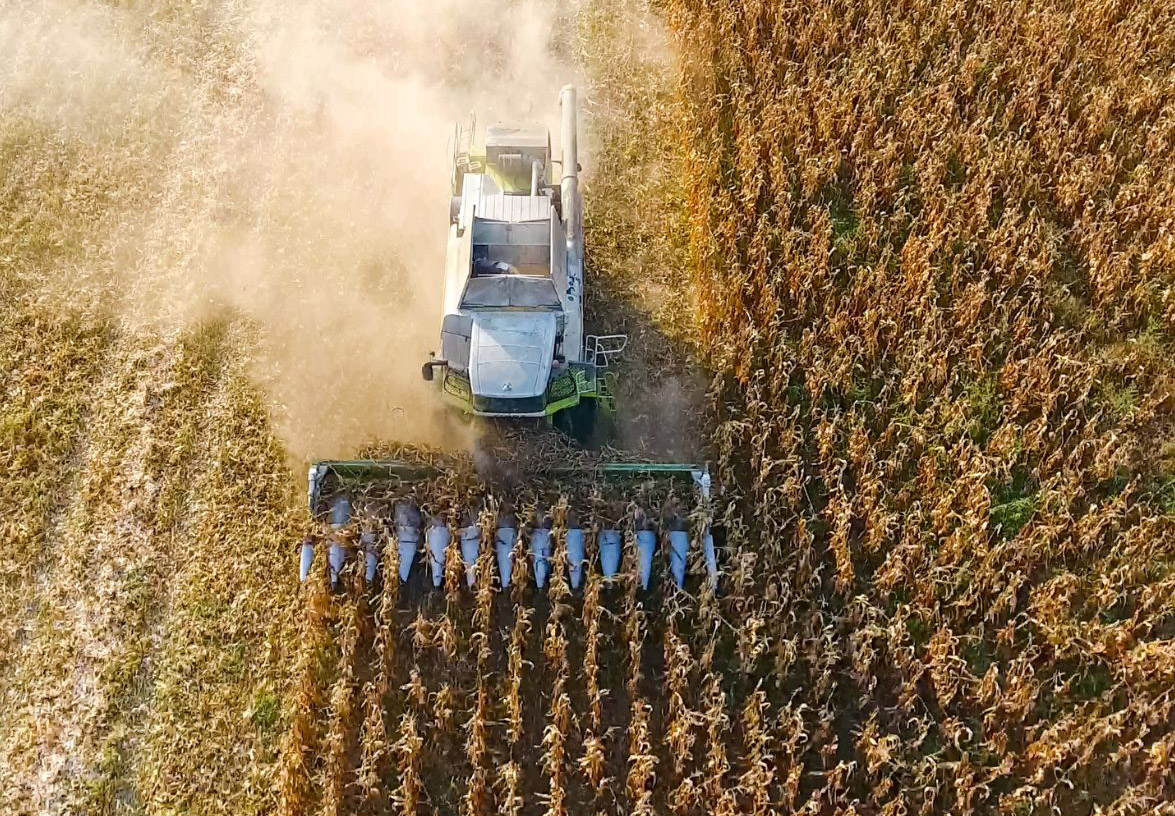With the delivery of its report to the Minnesota Legislature last month, the Clean Transportation Standard Work Group created a state policy framework for reducing carbon pollution from transportation fuels. Freshwater strongly supports carbon reduction initiatives and clean fuels. However, we want to watch for unintended negative consequences to the environment and rural communities.
A clean transportation standard could either help or hurt water quality – depending on whether it further incentivizes corn ethanol production in Minnesota. We recommended that full impacts to land and water be reviewed more thoroughly, along with careful consideration of how a new state policy might interact with the federal biofuels policy that has so far led to more corn and more agricultural pollution on the landscape.

Measuring carbon intensity
The Minnesota Legislature directed four state agencies to form the work group last year with the goal of reducing the carbon intensity of fuels at least 25 percent by 2030, 75 percent by 2040, and 100 percent by 2050 as compared to 2018 levels.
The implementation of a clean transportation standard in Minnesota would make it the first Midwestern state to enact such a standard. This would involve assigning a carbon intensity score to various transportation fuel types, and then creating a market where credits could be bought, sold and traded. Carbon intensity is a measurement of lifecycle greenhouse gas emissions that includes all stages of fuel production, delivery and use in a vehicle.
The work group recommends using the GREET Life Cycle Model developed by the U.S. Department of Energy’s Argonne National Laboratory. However, they acknowledge that the model does not take into account land-use changes that may result from farmers changing crop rotations to increase corn production, deferring conservation easements, or bringing non-agricultural lands (particularly marginal and often highly erodible acres) into production as demand for biofuel feedstock rises. This model also doesn’t take into account full life cycle modeling of the carbon, like Professor Jason Hill has done at the University of Minnesota.
Lessons from the federal Renewable Fuel Standard
 The influence of federal biofuels policy on agricultural land use is assessed in a 2022 study, Environmental outcomes of the US Renewable Fuel Standard. Enacted in 2005, the Renewable Fuel Standard mandates that biofuels (mainly corn ethanol) be blended into gasoline at increasing amounts annually. By 2016, the policy had contributed to a 31 percent increase in corn prices, along with a number of concerning statistics:
The influence of federal biofuels policy on agricultural land use is assessed in a 2022 study, Environmental outcomes of the US Renewable Fuel Standard. Enacted in 2005, the Renewable Fuel Standard mandates that biofuels (mainly corn ethanol) be blended into gasoline at increasing amounts annually. By 2016, the policy had contributed to a 31 percent increase in corn prices, along with a number of concerning statistics:
- 8.7 percent annual increase in the area of corn farmed.
- 7.5 percent annual increase in synthetic nitrogen fertilizer use.
- 5.3 percent increase in nitrate leaching.
- 3.2 percent increase in edge of field phosphorus runoff.
- 4.7 percent increase in soil erosion.
Given the land use impacts of conversion to corn production instead of pasture or grasslands, the study found that the carbon intensity of ethanol could be as much as 24 percent higher than gasoline.
Corn is a major contributor to pollution of surface waters and groundwater, due to its shallow roots and intensive fertilizer and pesticide requirements. As Minnesota wrestles with nitrate contamination of drinking water and other water quality issues, it is critical for policymakers to consider how manipulation of the biofuels market could negatively impact water quality and supply.
Potential for water quality improvements
If a clean transportation standard is crafted to incentivize alternative crops such as winter camelina and pennycress, it could benefit both water quality and climate. These oilseeds can be planted as cover crops and turned into sustainable aviation fuel. Providing credit premiums for biofuels produced on acreage with continuous living cover systems could help to further promote soil and water quality improvements.
Cellulosic waste from agricultural plant stems or from removal of diseased wood (ash trees, for example) could also be good sources of biomass for fuels. Culled wood from forest management is often burned at the forest edge, and this cellulosic material is another prime candidate for recycling into biofuels instead of burning and releasing carbon dioxide into the atmosphere.
In a January response letter to the Clean Transportation Standard Work Group report, The Nature Conservancy recommended the state develop an environmental integrity score to be implemented alongside a carbon intensity score. This would help to incentivize adoption of regenerative agriculture practices and hopefully avoid unintended environmental consequences.
Ultimately, there is reason to be cautious about enacting a clean transportation standard in Minnesota. The Star Tribune recently published an opinion piece on the issue written by Jason Hill, professor in the University of Minnesota Department of Bioproducts and Biosystems Engineering. Hill asserts that California’s low carbon fuel standard has led to an increase in corn ethanol, and that political pressure here would do the same. His recommendation? Focus on electric vehicles, invest in public transportation, and reduce our use of liquid fuels altogether.
Nice summary of the issue. I appreciated the links to background information. I hope our legislators – state and Federal – are seriously considering this perspective..